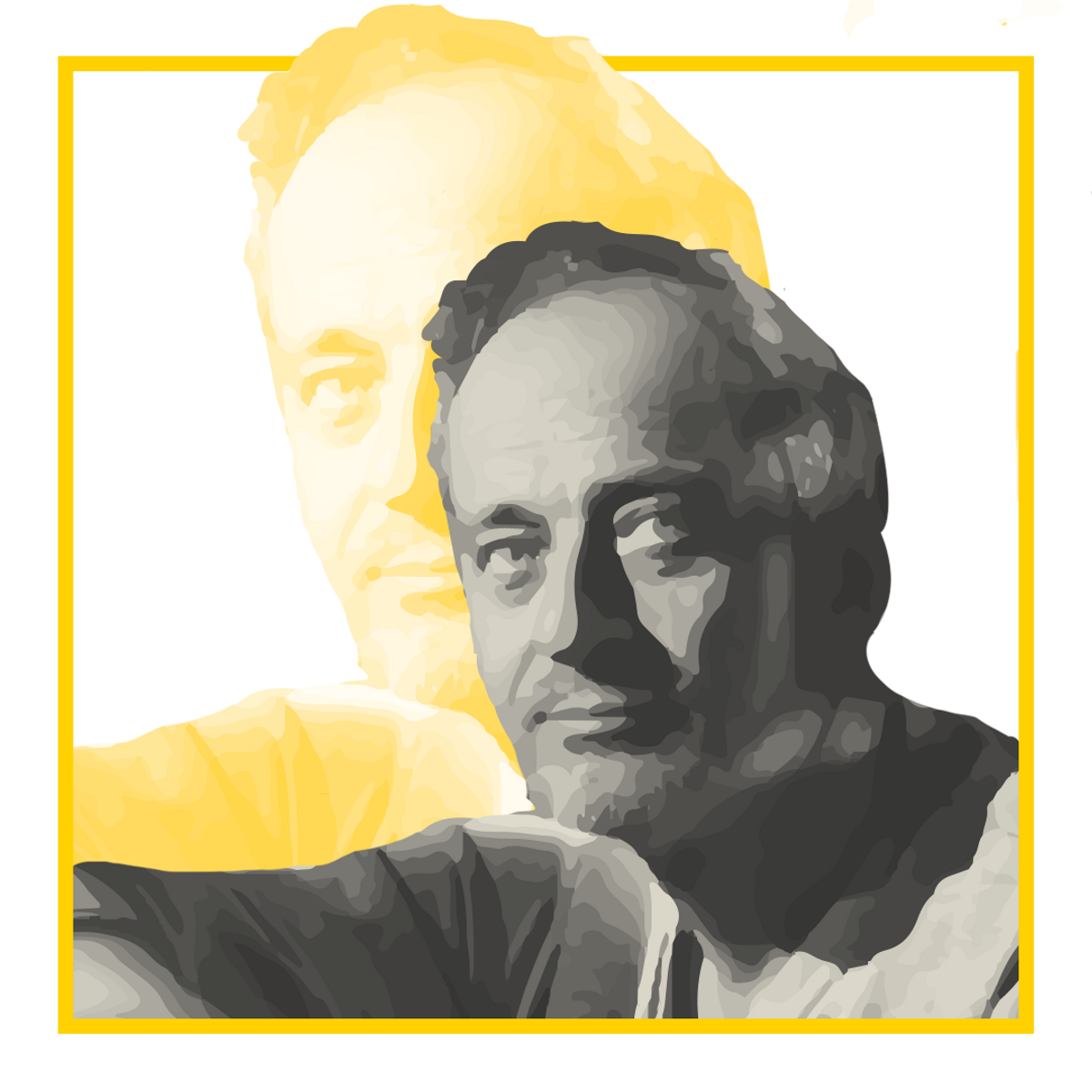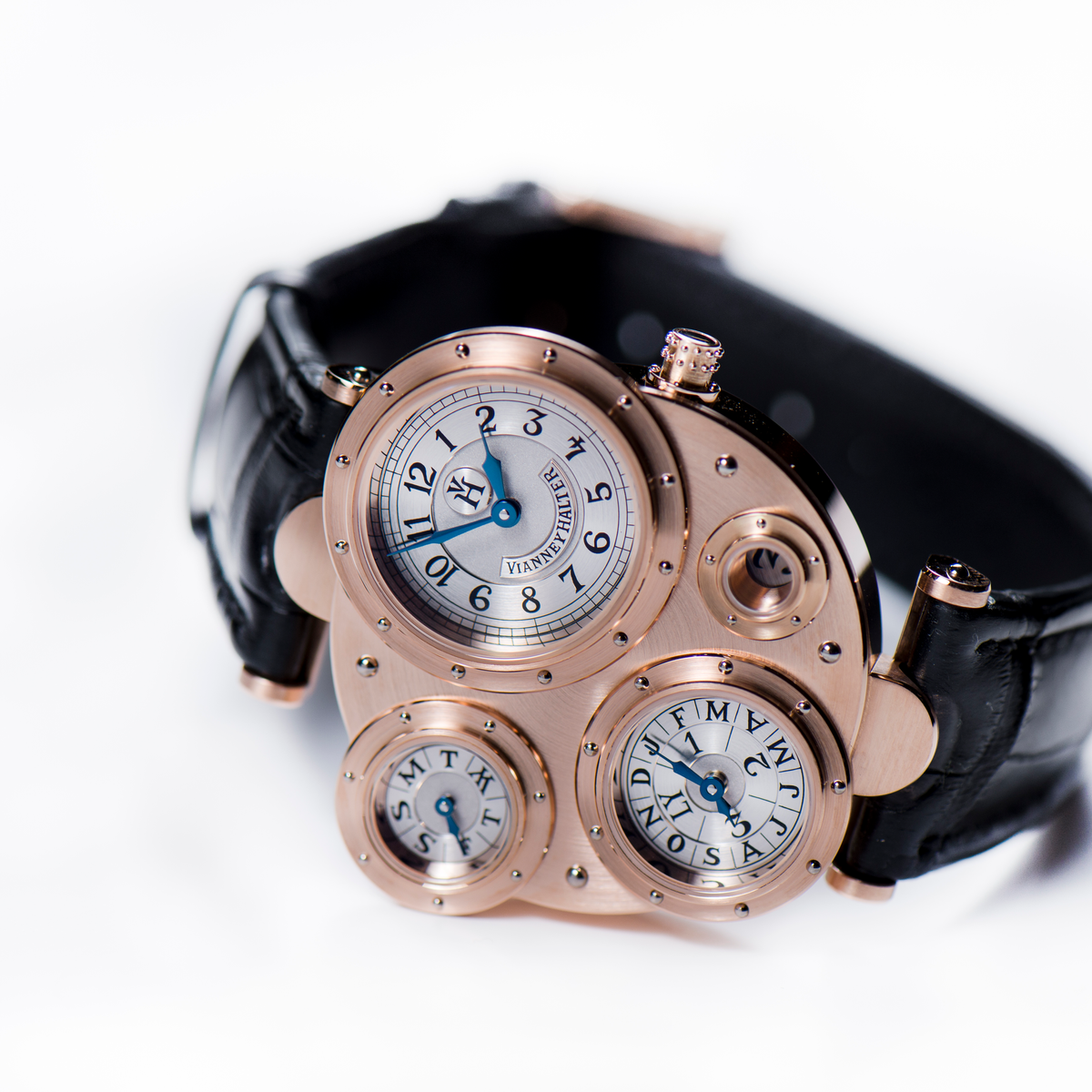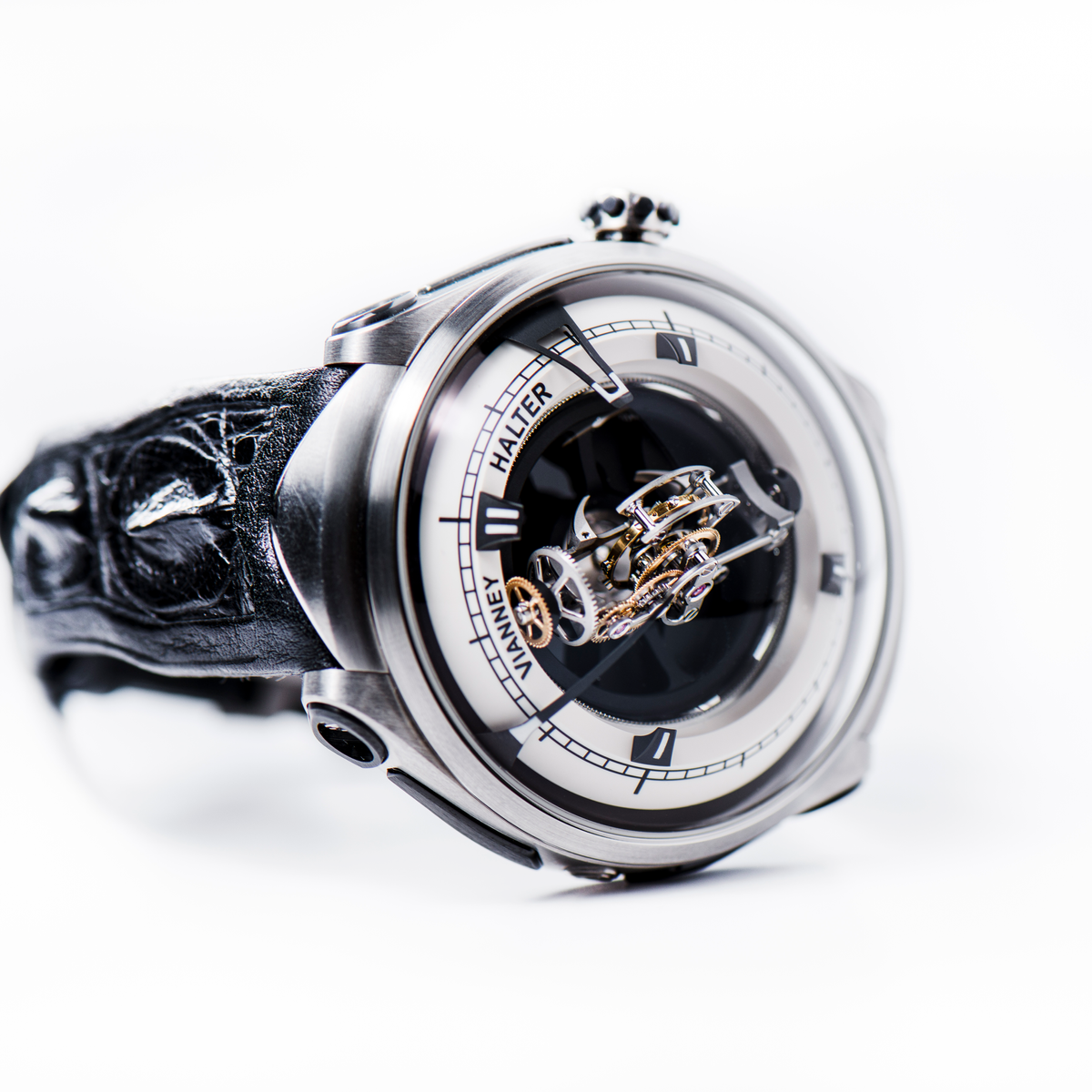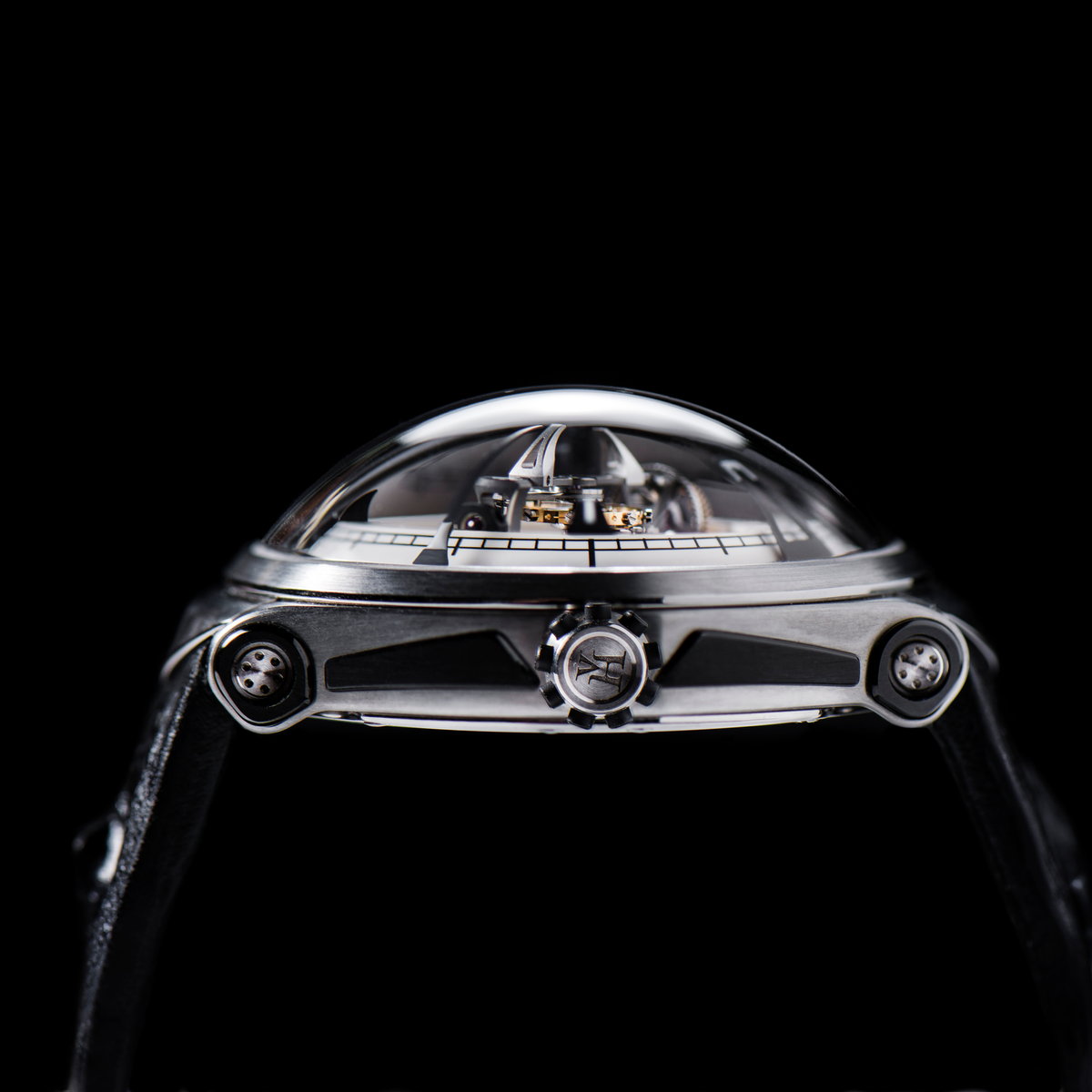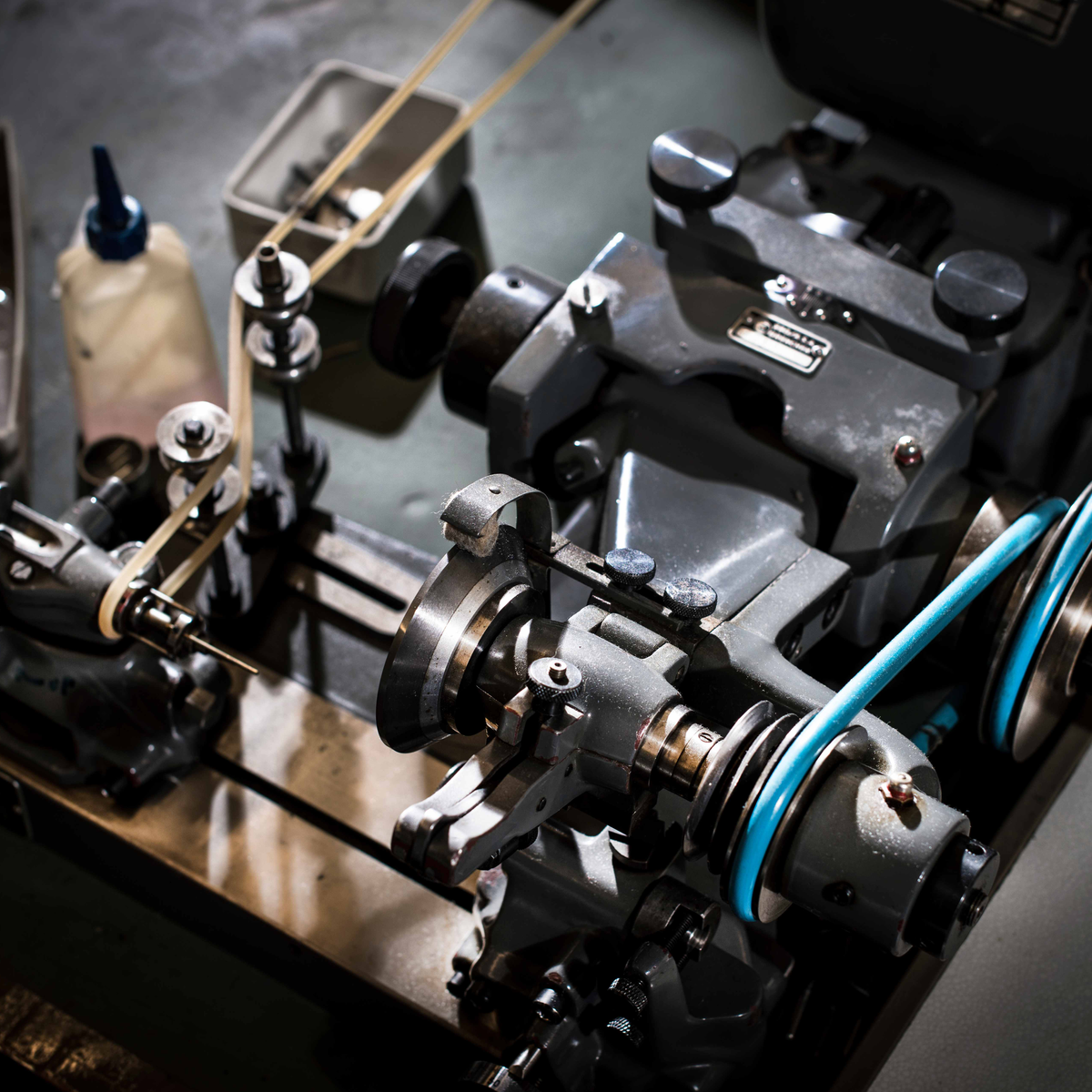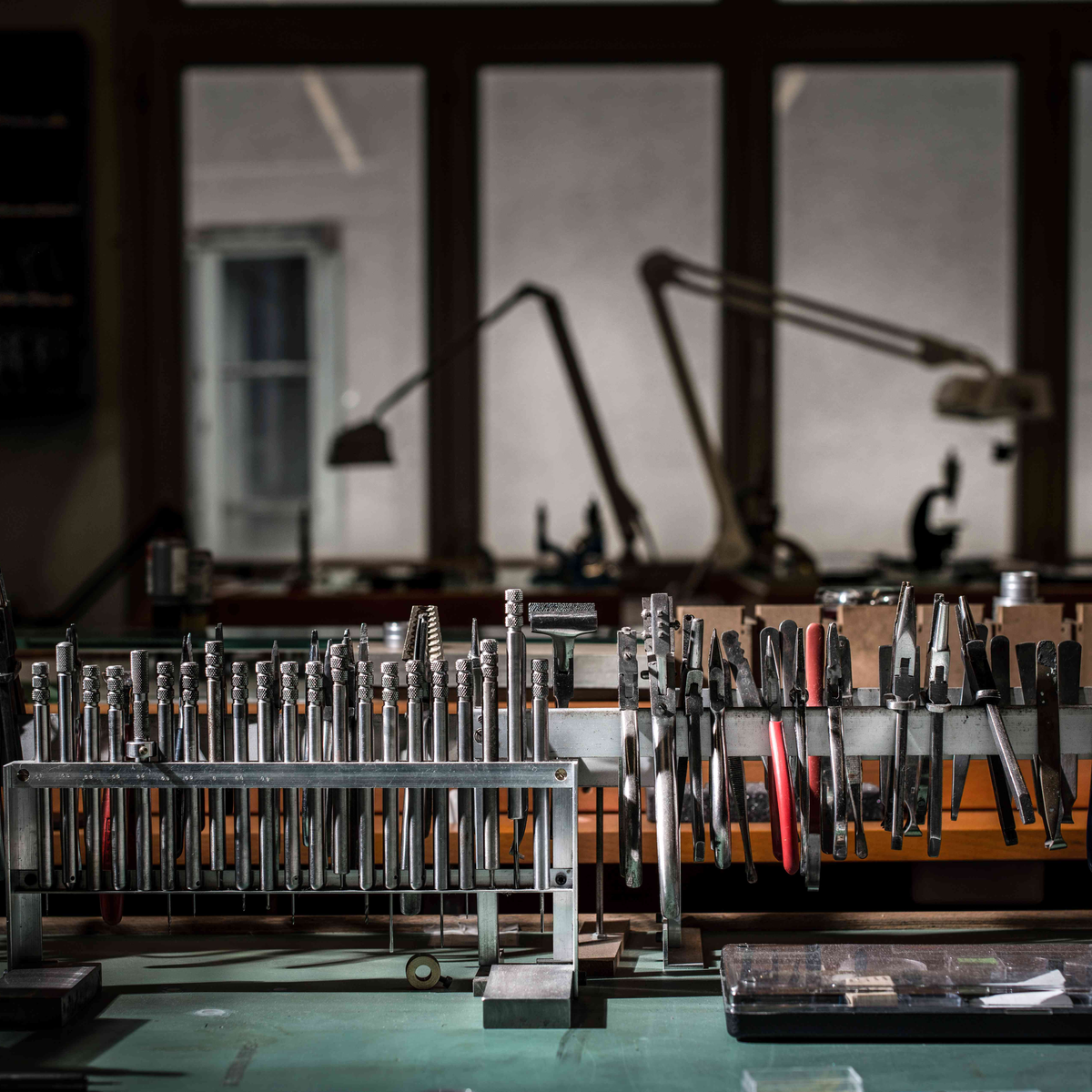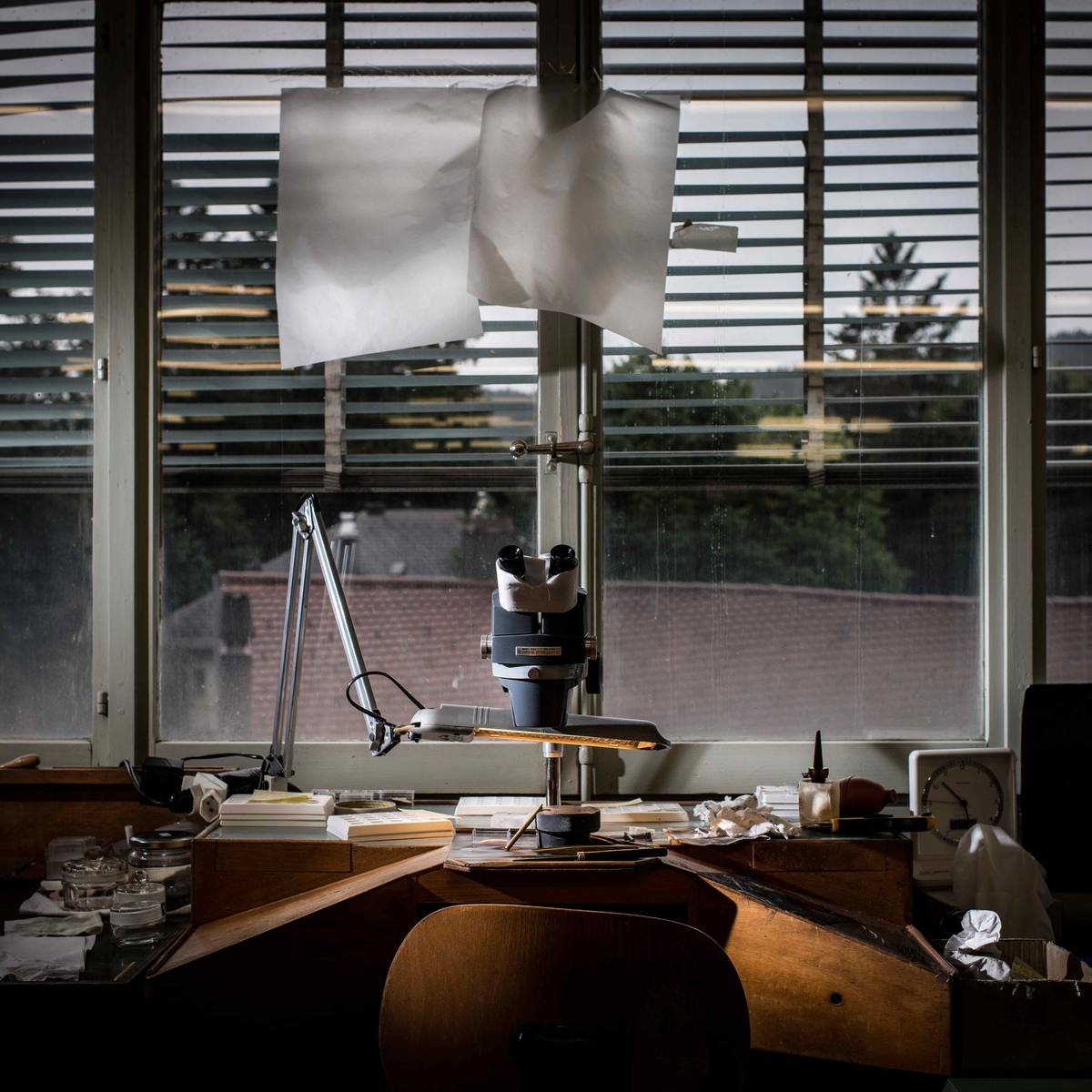Having completed his studies at École d’Horlogerie de Paris, Vianney Halter (b. 1963) spent the first years of his career in restoration, deepening his understanding of mechanisms. But the desire for independence was strong, and in 1989 Vianney Halter left France for Sainte-Croix in Switzerland, where he teamed up with François-Paul Journe and Denis Flageollet, now at the head of De Bethune, in a company that developed complication movements for third parties. He spent an entire year working on a Breguet sympathique clock and also lent a hand to automaton maker François Junod. Manufacture Janvier, the company he named after the great French watchmaker Antide Janvier (1751-1835), followed in 1994. This is where Vianney Halter began to develop his own ideas, all the while working on watches for the likes of Audemars Piguet, Franck Muller, Jaquet Droz and Mauboussin. When gaps began to appear in his order books, the consequence of a sluggish Asian economy, he put this free time to use to create the Antiqua, which caught the attention of Philippe Dufour and the Académie des Horlogers Créateurs Indépendants (AHCI). This marked the beginning of the Vianney Halter name and soon brand that he would drive forward with projects such as the Opus 3 for Harry Winston, a Jumping Hours Moon Phases for Goldpfeil and a base mechanism for Cabestan.
There is a definite Vianney Halter style: one of immense technical skill serving a creative steampunk aesthetic. Jules Verne and Star Trek are never far away. His first watch, the Antiqua, epitomised this with an innovative configuration that split its perpetual calendar complication across four porthole displays. It was followed by the Classic, a three-hander of which 250 were made, and the Classic Janvier showing the time, moon phases and the rarely seen running equation of time. In 2010, during a difficult period for the watch industry, impacted by the global economic crisis, Vianney Halter was forced to lay off Manufacture Janvier’s twenty staff.
Despite this setback, the ideas kept coming and in 2013 Vianney Halter imagined the Deep Space Tourbillon with a tri-axial tourbillon and peripheral time display. The Deep Space Resonance, developed over ten years and released in 2020, reprised the tri-axial tourbillon but this time with two balance wheels whose frequencies resonate one with the other. A pioneer of watchmaking’s “new wave” which emerged at the turn of the millennium, Vianney Halter’s creativity and skill won him the Best Watchmaker prize at the 2011 Grand Prix d’Horlogerie de Genève and the 2016 Prix Gaïa in the Craftsmanship-Creation category.
1980
After graduating from the Paris School of Watchmaking, Vianney Halter opens a restoration workshop in Paris.
1989
Creation of THA - Techniques Horlogères Appliquées by François-Paul Journe and Denis Flageollet, later joined by Vianney Halter.
1994
Manufacture Janvier established in Sainte-Croix.
1998
The Antiqua perpetual calendar.
2000
Inducted into the Association des Horlogers Créateurs Indépendants (AHCI).
2013
Launch of the Deep Space Tourbillon with central tri-axial tourbillon.
2016
Awarded the Prix Gaïa in the Craftsmanship-Creation category.
2021
Deep Space Resonance with central tri-axial tourbillon and two balance wheels in resonance.
